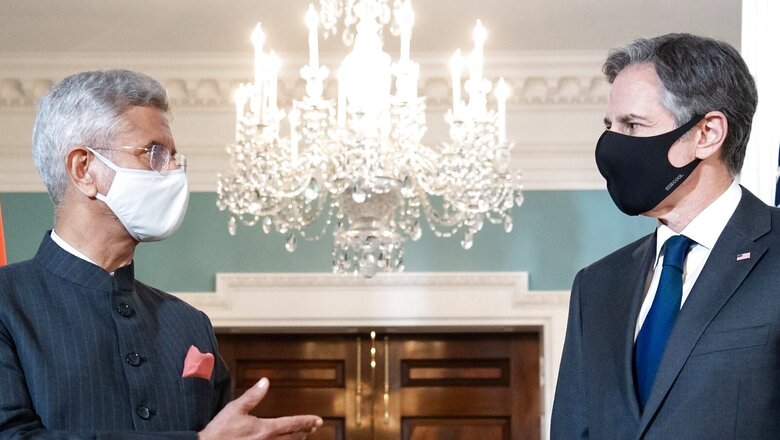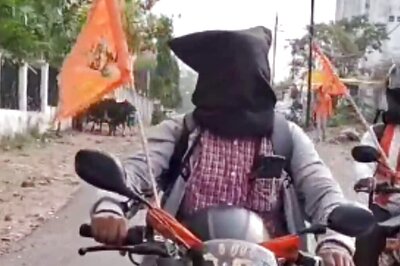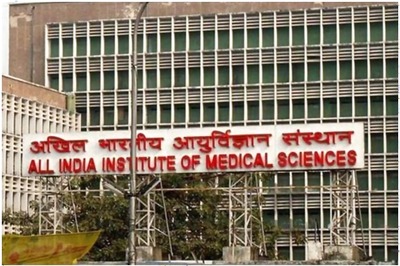
views
Nations take a long time to alter the parameters of their foreign and security policies. That’s because a nation’s foreign policy flows from several sources: From the international system to its domestic political imperatives to the cultural factors that underlie its society to the personal characteristics and perceptions of individual decision-makers. This usually provides an essential continuity to a nation’s foreign policy framework. Like most nations, India’s external outlook has also traditionally been a result of these varied factors interacting and transforming each other.
Yet, there are times when nations come to a crossroad, where the ends, ways and means trifecta has to be recalibrated and that too drastically. Such inflection points are rare but when they arrive, nations have to make decisive choices. As India observes the 30th anniversary of the 1991 reforms, it is time to assess and acknowledge the critical role these reforms have played in shaping the trajectory of Indian foreign policy over the last three decades.
Indian policymakers have been forced to respond to their nation’s political and economic rise and reshape its foreign policy accordingly. As a nation’s weight in the global balance of power rises, it is confronted with the choice of whether to become a major power or not. However, a state’s freedom to choose whether to achieve that status is, in reality, tightly constrained by structural factors. India’s rise in the global inter-state hierarchy is a reality, the foundations of which were laid at the end of the Cold War.
Throughout the Cold War period, India was concerned about getting entangled in the US-USSR superpower rivalry. It made sense to make a choice in favour of a non-aligned foreign policy posture that, at least in theory, preserved India’s decision-making autonomy in the realm of international affairs. Behind all the rhetoric of the so-called Third World solidarity, there was a very cool-headed calculation that was aimed at protecting vital Indian interests. And these interests were fairly limited in scope, given India’s relatively limited economic and military capabilities. Pakistan’s security strategy was India’s most immediate threat—India’s obsession with Pakistan was not all that surprising.
But beyond Pakistan, there was little clarity—something that was vividly brought home in the stunning defeat at the hands of the Chinese in 1962. And even on Pakistan, there is little evidence to suggest that India had a coherent strategy. The wars with Pakistan kept coming and India continued to fight those wars without ever bothering to make the assessment if a policy can be evolved that would make these wars go away. The patting on the back that India didn’t start any of these wars and that it fought only when provoked could not hide the fact that there was a big policy vacuum at the heart of Indian foreign and security policy.
Post-Cold War Foreign Policy
The end of the Cold War came as a blessing in disguise as it forced Indian policymakers to adapt to the new global political and economic realities—it was a much-needed shock. Many of the central assumptions of Indian foreign policy had to be reviewed in light of the changed circumstances. The shape of the world changed, signalling the possibility of a new Indian foreign and national security strategy.
ALSO READ | 8 Ways to Cut India’s Regulatory Cholesterol and Create 100 Million New Formal Jobs
At this point, India’s economic reforms put the nation on a high-growth trajectory, plunging it willy-nilly into the realm of great power politics. And as a new decade dawned at the beginning of a new millennium, India seemed poised to be at the threshold of achieving the status of a major global power, emerging as an indispensable, albeit reluctant, element of the new global order—exemplified by its growing economic and military might. Indian democracy became so much more attractive after the Indian economy started delivering strong results.
The early 1990s was a time when a succession of weak governments had left India rudderless—economically, politically and strategically. The world was changing rapidly and the Indian economy was collapsing. India was facing a million mutinies and there was no one of national stature to stem the tide. The Mandal-Mandir discourse—controversies surrounding caste reservations and Ayodhya—was threatening to unravel the country. It was at such a juncture that then Prime Minister P.V. Narasimha Rao assumed power. He had scant support from the senior party leadership of his own party, which was filled with those who had their own aspirations to become prime minister.
Despite the caricature of Rao being indecisive, he was one of the most decisive leaders this nation had seen. On all crucial issues, he took decisions that have continued to shape India’s rise over the last two decades. Rao made economic reforms politically tenable at a time when his own party was out to scuttle his most ambitious undertaking.
India’s foreign policy challenge in the early 1990s was as profound as the economic one. The world had suddenly become unipolar with India’s main ally, the Soviet Union, virtually disappearing from the world map. New Delhi had to link its economic policy with foreign policy more effectively. Recognising that India would need the support of the West and especially the US if the economic reforms were to succeed, Rao laid the foundations for a revival of US-India ties acknowledging the importance of the US in the global strategic architecture.
In the Middle East, Rao had the courage that no other Indian leader had. He established full diplomatic ties with Israel in 1992 even as he reached out to Iran, paying a landmark visit to Tehran in 1993, becoming the first Indian prime minister to visit Iran since the 1979 revolution. The ‘Look East’ policy had to be initiated as the centre of gravity of global economics was shifting to the East and India’s economic future needed to be linked to the booming economies in East Asia. India had to expand its engagements with the Association of Southeast Asian Nations (ASEAN) not only as a matter of India’s economic revival, but also as a counterweight to rising Chinese dominance.
The imprimatur of the early 1990s is everywhere in Indian foreign policy today: Moving away from non-alignment to issue-based alignments; Delhi’s subtle balancing act in the Middle East; trying to establish a stable balance with China; more robust defence diplomacy in key global geographies; the outreach to East and Southeast Asia as part of India’s ‘Look East’ and ‘Act East’ policies; and helping India achieve enough economic heft to withstand sanctions after the NDA government conducted the nuclear tests at Pokharan-II.
It was Rao’s sagacious political leadership that sustained economic reforms in the early 1990s and created a broader political consensus in the country in favour of their continuation. Once these reforms started delivering, it gave confidence to the wider Indian political class to become more ambitious. Rao’s successors continued with the reforms agenda, sometimes openly and sometimes by stealth. Economic reforms that were pursued three decades back generated a momentum that allowed leaders as diverse as Atal Bihari Vajpayee, I.K. Gujral, H.D. Deve Gowda, Manmohan Singh and now Narendra Modi to champion their cause ever since. As a result, economic reforms came to the mainstream of Indian political discourse, generating new possibilities and alignments.
The Impact of 1991 Reforms on India’s Global Standing
In no time, these reforms began to shape the global reassessment of India, predicated around its economic rise. The reforms generated rapid economic growth and transformed the way India engaged with the world. India is today wooed by major powers and is part of all major global platforms. From climate change and maritime security, from emerging technologies to globalisation, New Delhi today is articulating a new role for itself largely derived from the self-confidence of its economic success. In the last year and a half alone, India has weathered the COVID-19 pandemic on the one hand while on the other it has pushed back against Chinese aggression at its borders. New Delhi was at the forefront of mobilising global opinion in managing the pandemic when most advanced industrial nations, including the US, were busy looking inwards. All this while New Delhi was also occupied fighting the Chinese soldiers on the border on its own.
ALSO READ | Liberalization Neglected Rural Growth for 30 Years. India Can No Longer Afford to Do That
India’s pushback against China has been a part of the Indian strategic posture for years now. Even when the West was busy cosying up to Beijing, New Delhi was challenging China on multiple fronts. India was the first major nation to openly criticise Xi Jinping’s Belt and Road Initiative (BRI) as a predatory infrastructure project. Today, New Delhi’s critique has become part of global consensus on BRI. The acceptance of the logic of the Indo-Pacific from the West to the East, despite China’s strong disapproval, would not have happened without India’s enthusiastic response to it. And the emergence of the Quad would have remained a pipedream if New Delhi hadn’t clarified its foreign policy choices.
India has robustly challenged China on multiple fronts and has led the world in finding a global solution to the pandemic. It has, of course, done this to protect and enhance its national interests. But in so doing, it also galvanised the global community. As major powers in the world come together to challenge China, they find in India a strong partner and a trusted friend. Sections of the global media may not find this convincing but global powers who are gravitating to India certainly see in India a compelling partner.
By any objective measure of material capability, India today is a rising power in the international system—the consequences of which are visible in the international system quite clearly. India’s rising wealth has enabled it to build up its military and diplomatic might. As a result, India has been able to use the extant global balance of power more deftly to its advantage.
With all its domestic challenges, India standing up to China and taking on its due role as a global leader is the real story of our times. It is already changing global strategic equations and will have a profound impact on the emerging balance of power. But this only became possible because of the reforms impetus created in 1991. It ensured that India’s capabilities could give shape to its political, economic and global aspirations. If, today, India is capable of arguing that it wants to be a “leading player” in the global order—a rule maker not merely a rule taker—it is the result of the confidence that the Indian economic story is alive and well. India can play the role of a responsible global stakeholder today largely because its economic capabilities allow for that possibility.
As the global order evolves into a more competitive phase with major powers openly competing, global institutions largely becoming dysfunctional and economic globalisation facing fragmentation, India stands at the centre of most of these debates. And the world listens to India because a democratic India trying to move towards an ambitious target of a US $5 trillion economy is a story well worth believing in and nurturing. That Indian policymakers can be aspirational to this degree today is a tribute to the economic reforms of three decades back, which unleashed the latent energies of a populace circumscribed by decades of regressive economic policies. Indian foreign policy has come a long way from the early 1990s, but it is clear that it is shaped to a significant degree by the legacy of economic reforms that happened thirty years ago.
This article was first published on ORF.
Read all the Latest News, Breaking News and Coronavirus News here.




















Comments
0 comment